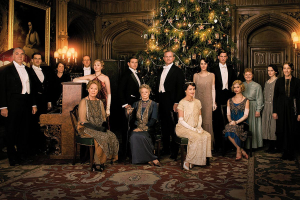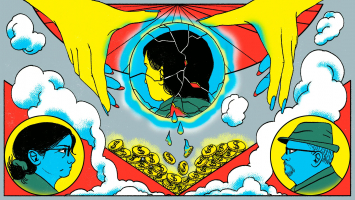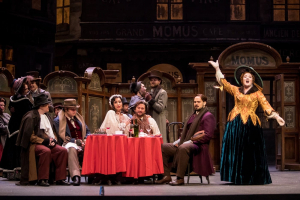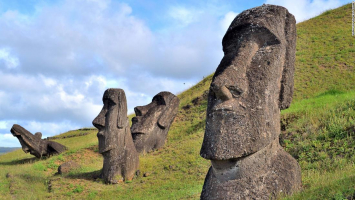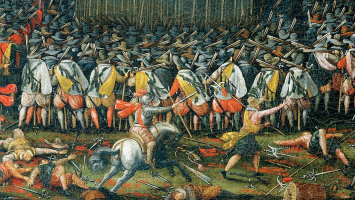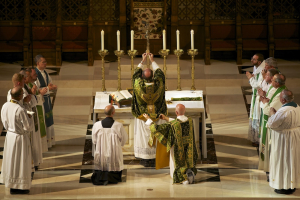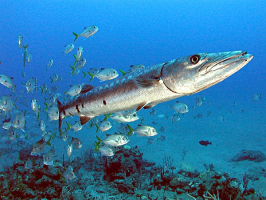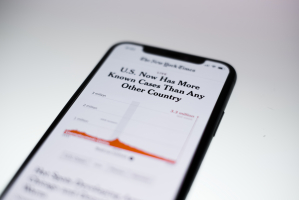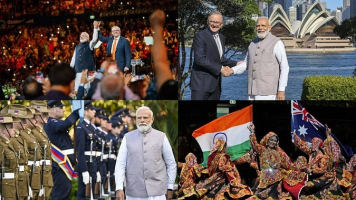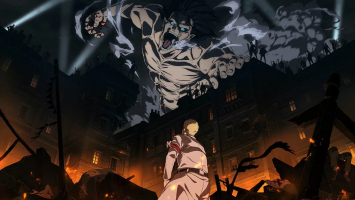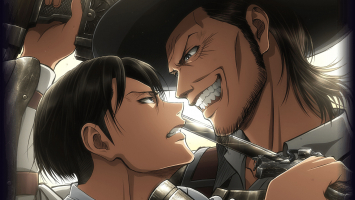Top 10 Times Fascism Overtook Democracy
One of the most significant and far-reaching historical events, if not the most significant, was the sudden development of fascism after the First World War. ... read more...The ideology, which originally emerged with the ascent of Benito Mussolini in Italy, and its numerous applications by other governments in the decades that followed, particularly Nazism, have since had a profound impact on the modern world. Here are 10 Times Fascism Overtook Democracy.
-
Although the stated objectives of Mussolini's fascism and Hitler's nazism were nearly identical—restoring the glory of ancient empires, reshaping society along militaristic principles, arbitrarily selecting a group of people and blaming them for every issue—historians have long maintained that there are some significant differences between the two, even if they weren't particularly significant in the overall scheme of things.
Italian fascists weren't too fond of the 'biologically superior' side of the Nazi ideology, in contrast to the distorted racial theory of the Nazis, as Mussolini had quite a few Jewish assistants up until a little before the war (many Jews even participated in the March on Rome). They disagreed on religion as well. Mussolini, at least in the early years of his rule, actively formed an alliance with the Church, with frequent public displays of support for the institution and the reintroduction of religious symbols in public spaces after years of secularism being the state policy. In contrast, the Nazis were, at best, at odds with the Church because they believed religion to be a weakening force for native Germans' Aryan instincts, despite the fact that many Germans and Nazi officials were fervently religious.
As we previously stated, the victims of both of these philosophies and their final effects on the globe wouldn't care much about those differences. Hitler, in contrast to many other fascists on this list, did not primarily seize power through an uprising or violent takeover. Instead, President Paul von Hindenburg gave him the position of Chancellor in 1933, and he used it to transform Germany into the dictatorial, one-party state of Nazi Germany - and himself as the Führer - in 1934.
Without going over what the majority of us have already learned in school, Adolf Hitler and the other Axis nations that supported him during World War II would be held accountable for nearly 75 million fatalities globally. The Holocaust claimed the lives of about 12 million Jews, Roma, Slavs, Poles, prisoners of war, and other political opponents.Born: 20 April 1889Braunau am Inn, Austria-Hungary (present-day Austria)
Died: 30 April 1945 (aged 56)Berlin, Nazi Germany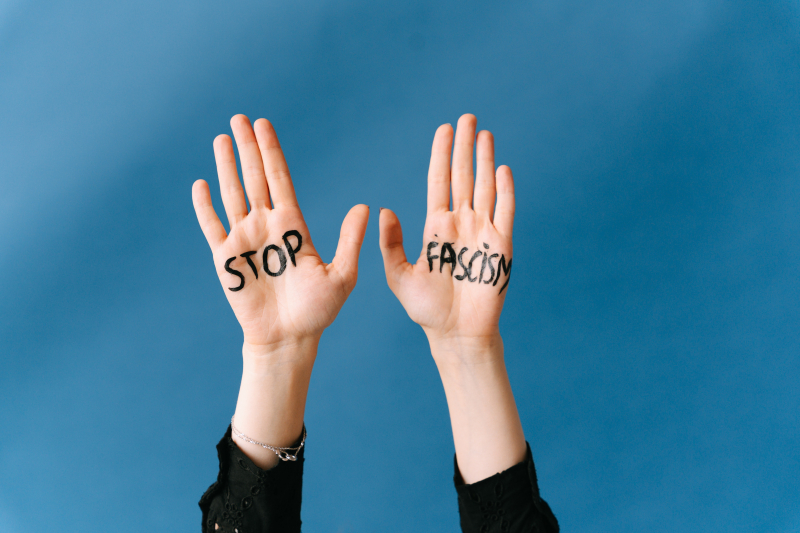
Image by Ivan Samkov via pexels.com HISTORY channel on Youtube -
Although fascism has appeared in an absurdly wide range of forms throughout the world since the early 1920s, its roots can be unmistakably traced to Benito Mussolini and his Blackshirts, a loosely organized, armed, and largely volunteer squad under his direct command that attacked and suppressed the Bolshevik-inspired left movements sprouting up across Italy in the wake of World War One.
Similar to the other nations that supported Germany, post-World War One Italy experienced years of economic suffering as well as an unfavorable peace treaty, creating the ideal environment for the establishment of the Mussolini-inspired form of government. In Italy, socialist and communist organizations were violently suppressed from 1919 to 1922 by Mussolini and the Blackshirts, with alarmingly high levels of popular support. His infamous March on Rome, which overthrew Luigi Facta's administration and installed him as Prime Minister until his death at the end of World War 2, gave him complete control over Italy.
As they say, the rest is history. The extreme nationalism, authoritarianism, and militarism that Benito Mussolini would later connect Italy with are characteristics we now associate with fascism. His final partnership with Hitler (who, spoiler alert, we'll talk about shortly) led to the outbreak of the Second World War, the biggest and most destructive conflict in history.Born: Benito Amilcare Andrea Mussolini, 29 July 1883Dovia di Predappio, Kingdom of Italy
Died: 28 April 1945 (aged 61)Giulino di Mezzegra, Kingdom of ItalyReading Through History channel on Youtube WatchMojo.com channel on Youtube -
Spain's involvement in the Second World War is noticeably absent from the record when we discuss it, despite the fact that the majority of us are aware that it involved practically all of Europe (save for a handful of countries that could manage to stay neutral, like Switzerland). It's not that it didn't want to pick a side; rather, it was just getting over a recent internal conflict that served as a microcosm of the larger conflict, at least in terms of the ideological orientation of the parties involved and the brutality, if not the magnitude.
Spanish Republicans, a loose coalition of anarchists, communists, social democrats, and other left-leaning groups supported by the Soviet Union, fought against aristocratic, nationalistic, and other conservative sections of the country that were supported by Nazi Germany and Fascist Italy during the Spanish Civil War, which raged from 1936 to 1939. Although the exact magnitude of the destruction is difficult to estimate, records place the number of casualties at anywhere between 500,000 and 1,000,000.The right-wing rebels won handily as a result, giving Italy and Germany the opportunity to practice numerous military techniques that they would later use, frequently with great success, during World War 2. Although most of us are aware that the Second World War covered nearly all of Europe, Spain's participation in it is conspicuously absent from the record when we debate it (save for a handful of countries that could manage to stay neutral, like Switzerland). It wasn't that it didn't want to choose a side; rather, it was still recovering from a recent internal struggle that was a miniature version of the larger one, at least in terms of the ferocity and ideological orientation of the parties engaged, if not in terms of scale.
The Spanish Civil War, which lasted from 1936 to 1939, was fought between the ruling Republicans and a loose alliance of anarchists, communists, social democrats, and other left-leaning organizations.
History Matters channel on Youtube History of Spain channel on Youtube -
A significant portion of the Kingdom of Yugoslavia was divided among the major Axis nations, including Germany, Italy, Romania, Hungary, etc., when Hitler's armies invaded it successfully in 1941. However, due to the recent emergence of the Ustashe within its borders—a far-right, pro-Nazi movement headed by Ante Pavelic—Croatia was transformed into a puppet state directly under German administration.
The current state of Croatia, nearly all of Bosnia and Herzegovina, and a small portion of Serbia were all included in the Independent State of Croatia from 1941 until the end of the war in 1945. It was a crucial ally in the Axis war effort because it not only provided them with military support on almost every front in the Western Theater, but the Ustashe also played a key role in suppressing the Yugoslav Partisans, who were arguably one of the most successful anti-fascist uprising movements in history.
Up until the 1945 conclusion of the war, the puppet state persisted. Although we would never know the full depth of the catastrophe, Pavelic was directly responsible for the genocide of between 300,000 and 700,000 Serbs, Romas, Jews, partisans, prisoners of war, and other political opponents during that time. Pavelic, however, was never brought to justice for his crimes since he fled to Argentina using the same means as many other fascist and Nazi war criminals during the post-war period.Jutarnji Program TV Happy channel on Youtube Archivio Luce Cinecittà channel on Youtube -
Although the 1967 coup in Greece differed from other fascist movements on this list because it lacked traditional fascist characteristics, such as imperialism and one-man rule, academic sources from the era categorically identify it as a fascist dictatorship due to its overall characteristics. It was the focal point of the long-running political conflict between the right and left that had been developing in Greece at the time. It was organized by a group of—you guessed it—colonels from the Greek military who intended to thwart the democratic process in the impending general elections.
The military installations were strategically placed across Athens to facilitate the quick takeover, which included the quick detention of all political opponents, primarily anarchists, communists, and other left-leaning figures, but also democratic socialists and centrists. The "Regime of the Colonels," as it is known informally in Greece and elsewhere, governed until 1974 with an iron grip and was widely accused of torturing and killing political opponents.The administration's hostility for student movements, which it frequently crushed in campuses across the nation during elections and other democratic movements, was one of the many unsettling aspects of the system. One especially horrific instance involved the protests at the Athens Polytechnic College, where the military used a tank and other military-grade weapons to storm the campus, killing at least 34 demonstrators and students (even though unofficial casualty numbers are far higher).
Fun With Flags & History channel on Youtube AP Archive channel on Youtube -
Even though the January 2020 attack on the US Capitol, which is arguably the second-most significant government structure in the country after the White House, failed, it nevertheless represented one of the worst threats to the democracy of the nation in a very long time. It has subsequently been referred to as an insurrection by many because of Donald Trump's energizing speech questioning the outcome of the 2020 Presidential elections just before the attack.
Even though many popular, democratic movements around the world have adopted a similar strategy, not all occupations of government buildings are fascist in nature, this one most certainly was. Many of the organizations involved in the attack, including the Three Percenters, the Oath Keepers, Proud Boys, etc., have been quite open about drawing inspiration from European fascist movements. Their stated objectives include the establishment of a white supremacist state, opposition to immigration, violence against minorities, and other things we typically only associate with one side of the political spectrum.
Date: January 6, 2020The New Yorker channel on Youtube BBC channel on Youtbe -
While September 11 may symbolize something quite different to the rest of the world, it will always be associated with General Augusto Pinochet's bloody military coup against Chilean democracy in 1973, which the US supported. Pinochet's regime would go on to become a precedent for authoritarian, neo-fascist, CIA-backed regimes in South America during the Cold War era. He was voted as the Commander-in-Chief by the democratically elected, socialist government of Salvador Allende just 19 days before the coup.
The regime would be remembered for its torture and murder of tens of thousands of political opponents during his tenure as President from 1974 to 1990 - even if he continued as the top commander until as late as 1998. These included trade unionists, leaders of socialist organizations at home and abroad, student organizations, and really just anyone who openly opposed his authoritarian, militaristic style of governance.
The fiercely free-market, neoliberal policies that are still written in the Chilean constitution represent Pinochet's lasting legacy. However, the administration decided to rewrite it as a result of the large demonstrations in 2019 and the subsequent popular referendum in 2020; this was a decision that was universally applauded across the nation.Born: Augusto José Ramón Pinochet Ugarte, 25 November 1915Valparaíso, Chile
Died: 10 December 2006 (aged 91)Santiago, ChileIngen channel on Youtube INA Histoire channel on Youtube -
Although while some of his friends, including Heimwehr, a paramilitary, far-right nationalist organisation, would unquestionably fall on the "fascist" side of the spectrum, Engelbert Dollfuss' appointment as Austria's chancellor in May 1932 wasn't exactly an authoritarian takeover. However, that would only continue for about a year when he forcibly disbanded the legislature in 1933 and imposed an authoritarian, corporatist government modeled after Portugal's Estado Novo.
Dollfuss occupies an odd position on this list because he was strongly anti-Nazi despite holding the typical fascist views of being anti-communist, nationalist, pro-corporate, and extreme right-wing. It was a moment when Austrian fascism, supported by Mussolini's Italy, had all the characteristics of other fascist regimes at the time, but it resisted joining the sphere of influence of Nazi Germany. The fact that his government didn't last very long—he was slain in an attempt at a coup by members of the Austrian Nazi Party—means that it was also far less harsh than most other entries on this list.
Born: 4 October 1892, Texing, Lower Austria, Austria-Hungary
Died: 25 July 1934 (aged 41)Vienna, AustriaFilmakademie Baden-Württemberg channel on Youtube British Moviet channel on Youtube -
Although though quite a few other nations provided them with the assistance necessary to wage a war of that scale (thus the term "global" war"), we practically seldom remember the role of Axis powers during the Second World War besides Germany, Japan, and Italy. One of them was Marshal Ion Antonescu's tyranny in Romania.
In 1941, Antonescu, a Romanian army officer who had advanced through the ranks throughout the interwar years, seized total control of the country. Although the nation had already collaborated with the Axis powers before World War 2, Romania became one of Hitler's most trusted allies thanks to his ascent to power and his association with the Iron Guard, one of the most powerful fascist groups in Europe at the time.
Tens of thousands of Romanian Jews were killed during the war under Antonescu's dictatorship because he believed they were pro-Soviet, anti-nationalist, and sympathetic to communism—beliefs shared by the majority of fascists in Europe at the time. Throughout the entire war, Hitler had the highest regard for him, second only to Mussolini.
In August 1944, King Michael, the last king of Romania, orchestrated a coup that overthrew the regime and sped up the Soviet advance. The post-war communist government of Romania tried Antonescu for his crimes and ordered his execution as a war criminal in 1946.Born: 14 June 1882[1], Pitești, Argeș County, Kingdom of Romania
Died: 1 June 1946 (aged 63), Jilava, Ilfov County, Kingdom of RomaniaRaport Istoric channel on Youtube Grănicerul channel on Youtube -
Gyula Gombos was one of the numerous nationalist, far-right rulers who came to power in Europe during the interwar years, albeit his influence on the continent's politics would be little. It was the stock market crash of 1929 and the ensuing Great Depression that brought his extreme right-wing, nationalist, and pro-corporate politics to the fore. He first came to prominence for his ability to organize paramilitary, anti-communist groups in the immediate aftermath of World War One, as they played a significant role in the fall of the short-lived communist government of 1919.
In order to help Hungary out of its economic crisis, Gombos, who had just been elected prime minister, tried to instantly link the nation with other totalitarian countries of the era, such as Italy and Austria. He was well-known for his anti-Semitic and racist ideas and may be held responsible for the rise of fascism in Hungary at the time, but the liberal opposition to his policies inside the nation was too strong.
However, by 1934, the worst of the nation's economic crisis had passed, and his extreme, authoritarian brand of politics was no longer as well-liked as it had been when he had first been elected. He would pass away in office in 1936 from kidney failure without implementing any of his long-term plans.
Born: 26 December 1886, Murga, Austria-Hungary
Died: 6 October 1936 (aged 49), Munich, GermanyMagyarTörténelem channel on Youtube Various Artists channel on Youtube













